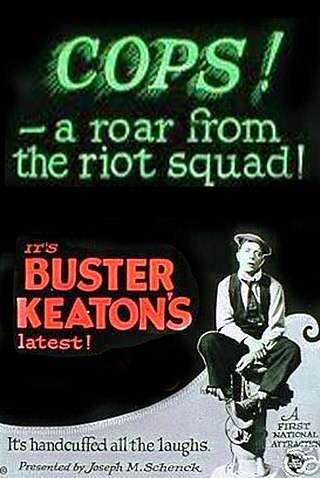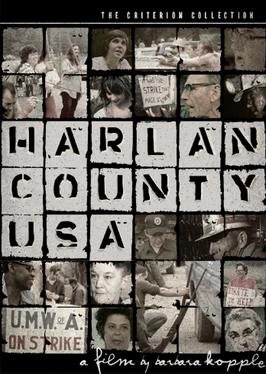Chulas Fronteras is a 1976 American documentary film which tells the story of the norteño or conjunto music which is played on both sides of the Mexico–Texas border. It was directed by Les Blank. A CD soundtrack of the music played in the film is also available, under the same title.

Cops is a 1922 American two-reel silent comedy film about a young man who accidentally gets on the bad side of the entire Los Angeles Police Department during a parade and is chased all over town. It was written and directed by Edward F. Cline and Keaton. This very Kafka-esque film was filmed during the rape-and-murder trial of Fatty Arbuckle, a circumstance that may have influenced the short's tone of hopeless ensnarement.
Czechoslovakia 1968 is a 1969 short documentary film about the "Prague Spring", the Warsaw Pact invasion of Czechoslovakia. The film was produced by the United States Information Agency (USIA) under the direction of Robert M. Fresco and Denis Sanders and features the graphic design of Norman Gollin.

The Forgotten Frontier is a 1931 American documentary film about the Frontier Nursing Service, nurses on horseback, who traveled the back roads of the Appalachian Mountains of eastern Kentucky. It was directed by Mary Marvin Breckinridge, and featured her cousin, Mary Breckinridge, who was a nurse-midwife and founded the Frontier Nursing Service. Also featured are the people of Leslie County, Kentucky, many of whom reenacted their stories.

Jam Session is a 1942 short film, directed by Josef Berne, which shows Duke Ellington and his orchestra performing "C Jam Blues".

The River is a 1938 short documentary film which shows the importance of the Mississippi River to the United States, and how farming and timber practices had caused topsoil to be swept down the river and into the Gulf of Mexico, leading to catastrophic floods and impoverishing farmers. It ends by briefly describing how the Tennessee Valley Authority project was beginning to reverse these problems.

Wild and Woolly is a 1917 American silent Western comedy film which tells the story of one man's personal odyssey from cowboy-obsessed Easterner to Western tough guy. It stars Douglas Fairbanks, Eileen Percy, Walter Bytell and Sam De Grasse. The film was adapted by Anita Loos from a story by Horace B. Carpenter and was directed by John Emerson.

Harlan County, USA is a 1976 American documentary film covering the "Brookside Strike", a 1973 effort of 180 coal miners and their wives against the Duke Power Company-owned Eastover Coal Company's Brookside Mine and Prep Plant in Harlan County, southeast Kentucky. It won the Academy Award for Best Documentary at the 49th Academy Awards.

Antonia: A Portrait of the Woman is a 1974 documentary about symphony conductor Antonia Brico, including her struggle against gender bias in her profession. The film was directed by Judy Collins and Jill Godmilow. It was nominated for an Academy Award for Best Documentary Feature.

The Chechahcos is a 1924 American silent adventure drama film about the gold rush days in the Klondike. Chechahco, more commonly spelled cheechako, is a Chinook Jargon word for "newcomer", and the film focuses on a group of would-be prospectors sailing for Alaska. The film was directed by Lewis H. Moomaw and produced by Austin E. Lathrop, who himself was once a prospector. The film was distributed by Associated Exhibitors. The film was the first shot on location in Alaska.

Hazel Jane Dickens was an American bluegrass singer, songwriter, double bassist and guitarist. Her music was characterized not only by her high, lonesome singing style, but also by her provocative pro-union, feminist songs. Cultural blogger John Pietaro noted that "Dickens didn’t just sing the anthems of labor, she lived them and her place on many a picket line, staring down gunfire and goon squads, embedded her into the cause." The New York Times extolled her as "a clarion-voiced advocate for coal miners and working people and a pioneer among women in bluegrass music." With Alice Gerrard, Dickens was one of the first women to record a bluegrass album. She was posthumously inducted into the International Bluegrass Music Hall of Fame alongside Gerrard in 2017.
The Buffalo Creek flood was a disaster that occurred in Logan County, West Virginia, on February 26, 1972, when a coal slurry impoundment dam burst, causing significant loss of life and property damage.
Nostalgia, styled (nostalgia), is a 1971 American experimental film by artist Hollis Frampton. It is part of his Hapax Legomena series.
Appalshop is a media, arts, and education center located in Whitesburg, Kentucky, in the heart of the southern Appalachian region of the United States.

The Iron Horse is a 1924 American silent Western film directed by John Ford and produced by Fox Film. It was a major milestone in Ford's career, and his lifelong connection to the western film genre. It was Ford's first major film, in part because the hastily planned production went over budget, as Fox was making a hurried response to the success of another studio's western. In 2011, this film was deemed "culturally, historically, or aesthetically significant" by the United States Library of Congress and selected for preservation in the National Film Registry.

The National Recording Registry is a list of sound recordings that "are culturally, historically, or aesthetically significant, and/or inform or reflect life in the United States." The registry was established by the National Recording Preservation Act of 2000, which created the National Recording Preservation Board, whose members are appointed by the Librarian of Congress. The recordings preserved in the United States National Recording Registry form a registry of recordings selected yearly by the National Recording Preservation Board for preservation in the Library of Congress.
Nimrod Workman was an American folk singer, coal miner and trade unionist. His musical repertoire included traditional English and Scottish ballads passed down through his family, Appalachian folk songs and original compositions.

Sludge is a 2005 documentary film by Appalshop filmmaker Robert Salyer chronicling the Martin County Sludge Spill that was an accident that occurred after midnight on October 11, 2000, when a coal sludge impoundment in Martin County, Kentucky, broke through an underground mine below, propelling 306 million gallons of sludge down two tributaries of the Tug Fork River. The movie documents the continuing story of the Martin County disaster, the resulting federal investigation, and the looming threat of coal sludge ponds throughout the coalfield region.

The National Film Registry (NFR) is the United States National Film Preservation Board's (NFPB) collection of films selected for preservation, each selected for its historical, cultural and aesthetic contributions since the NFPB's inception in 1988.
Sarah Ogan Gunning was an American singer and songwriter from the coal mining country of eastern Kentucky, as were her older half-sister Aunt Molly Jackson and her brother Jim Garland. Although she made an appearance in the New York folk music scene of the 1930s, she was overshadowed by her older brother and half-sister. Rediscovered in the 1960s while living in Detroit, she played at folk festivals at Newport in 1964 and the University of Chicago in 1965.













